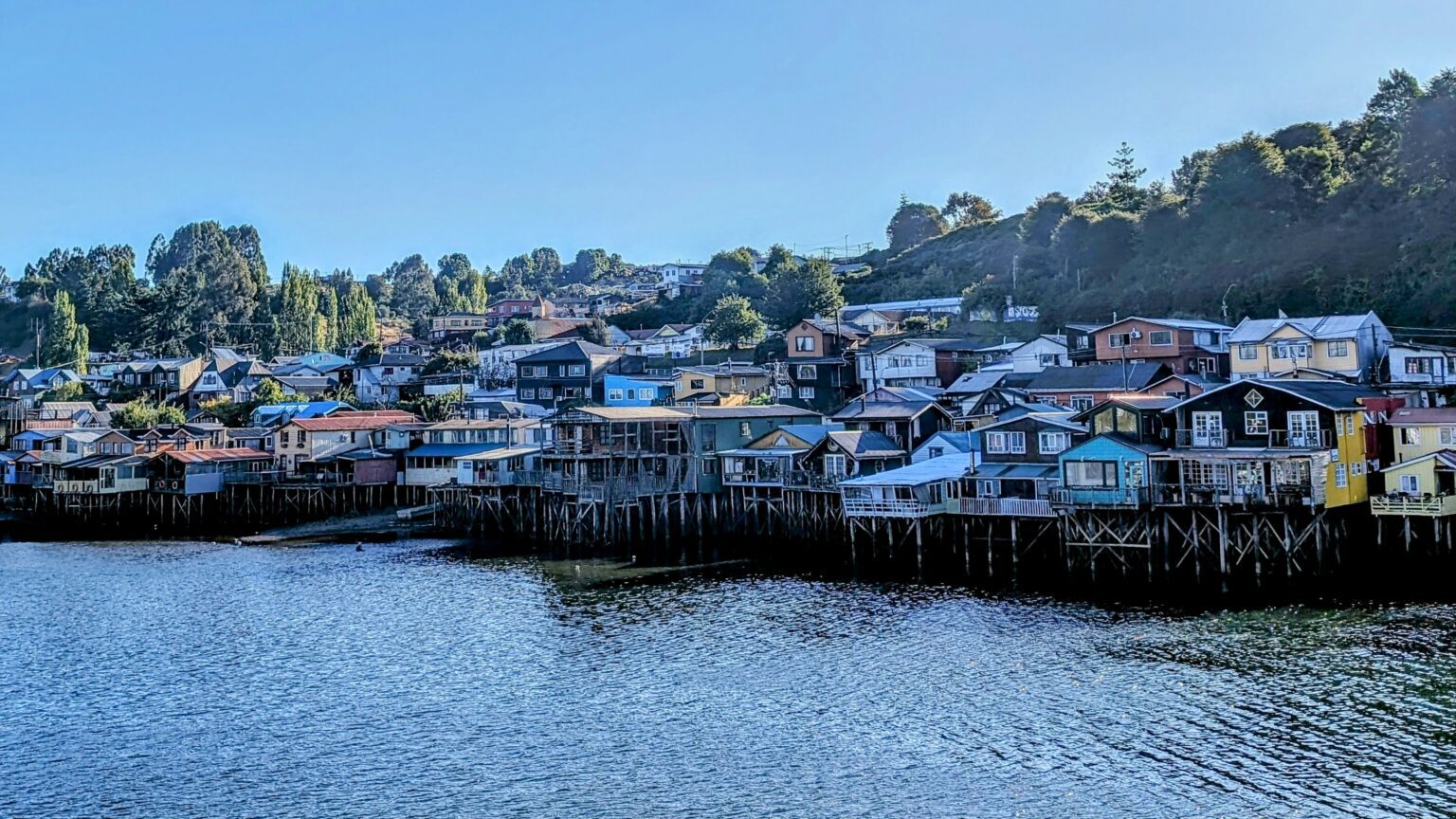The Patagonia region stretches to the coast of Chile through some uniquely rugged landscapes. These landscapes vary between mountains, plains, glaciers, fjords, lakes, and even islands. We had the opportunity to visit the second biggest island in this region, Chiloé, and its archipelago. Over the weekend, we explored some small fishing villages on this beautiful island. Besides the fresh seafood and unique landscapes, this region also has some interesting history, impacting the architecture and culture here.
Because of its isolation from mainland Chile, the colonization of this area had a unique impact on the culture, creating an interesting merge rather than overrunning the existing culture of the island. (Its isolation, historically, is from being an island. Today, it’s just a ferry ride away!)
The Unique Architecture of Chiloé
The island was originally inhabited by the Chono, Huilliche and Cunco peoples and uncovered by Spanish colonizers in the 16th century. By the 18th century, Spanish missionaries settled the island and built wooden churches throughout the island, some of which are still standing today.
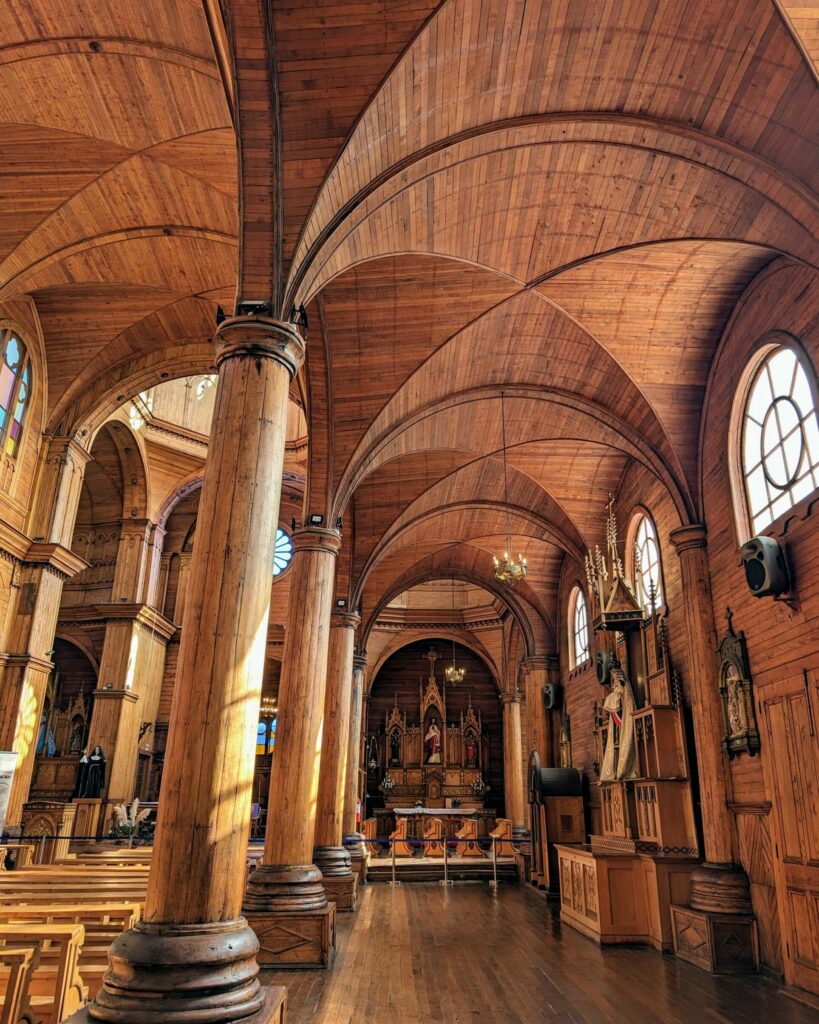
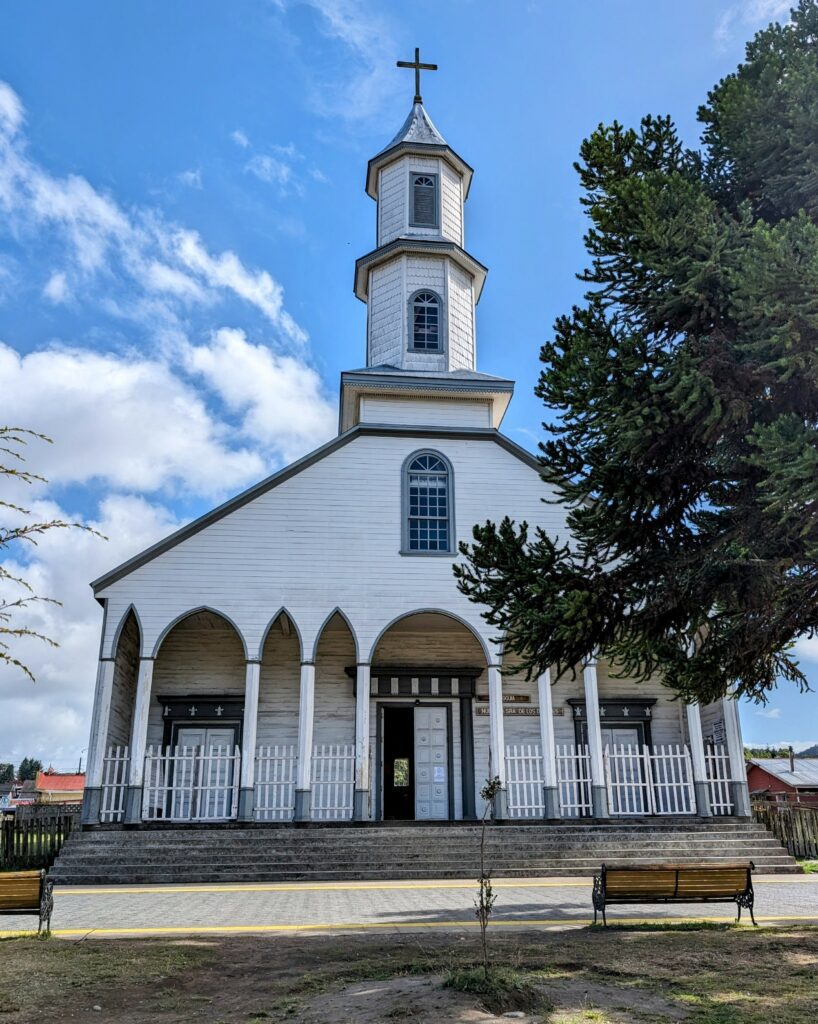
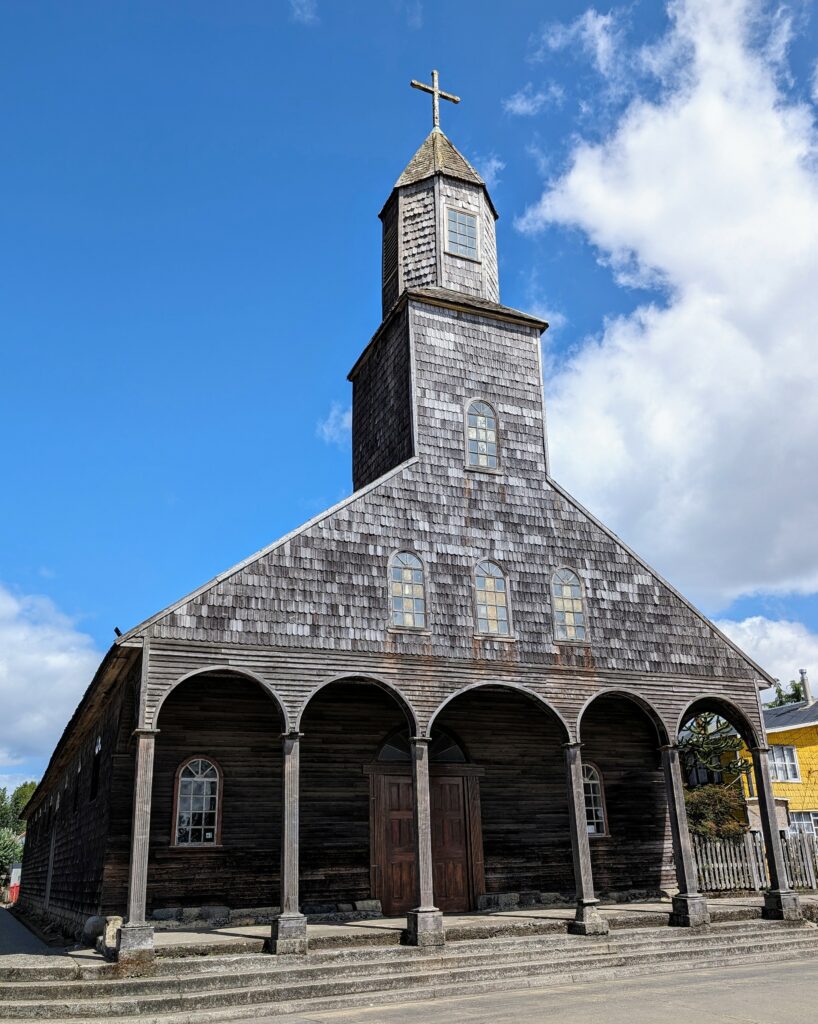
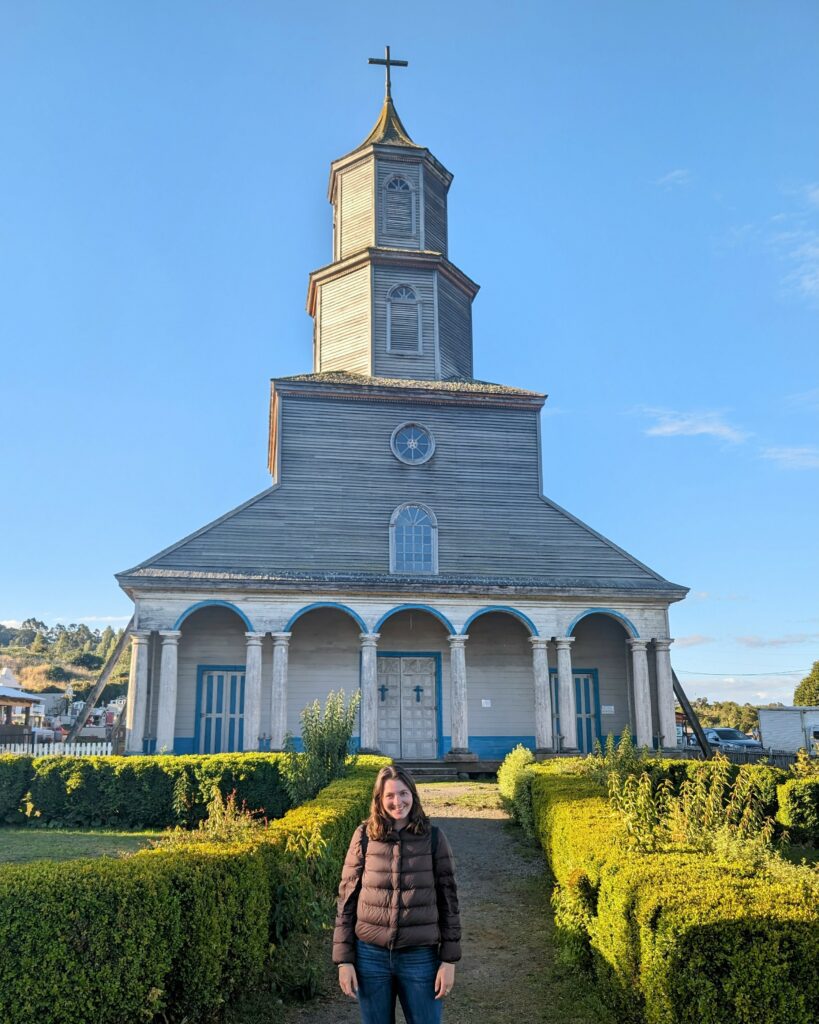
These simple churches are truly remarkable for their age and resistance to the sea weather that the island faces. We visited four of them during our time in Chiloé including Castro, Dalcahue, Achao, and Nercon but there are many others throughout the island, as seen in the map below.
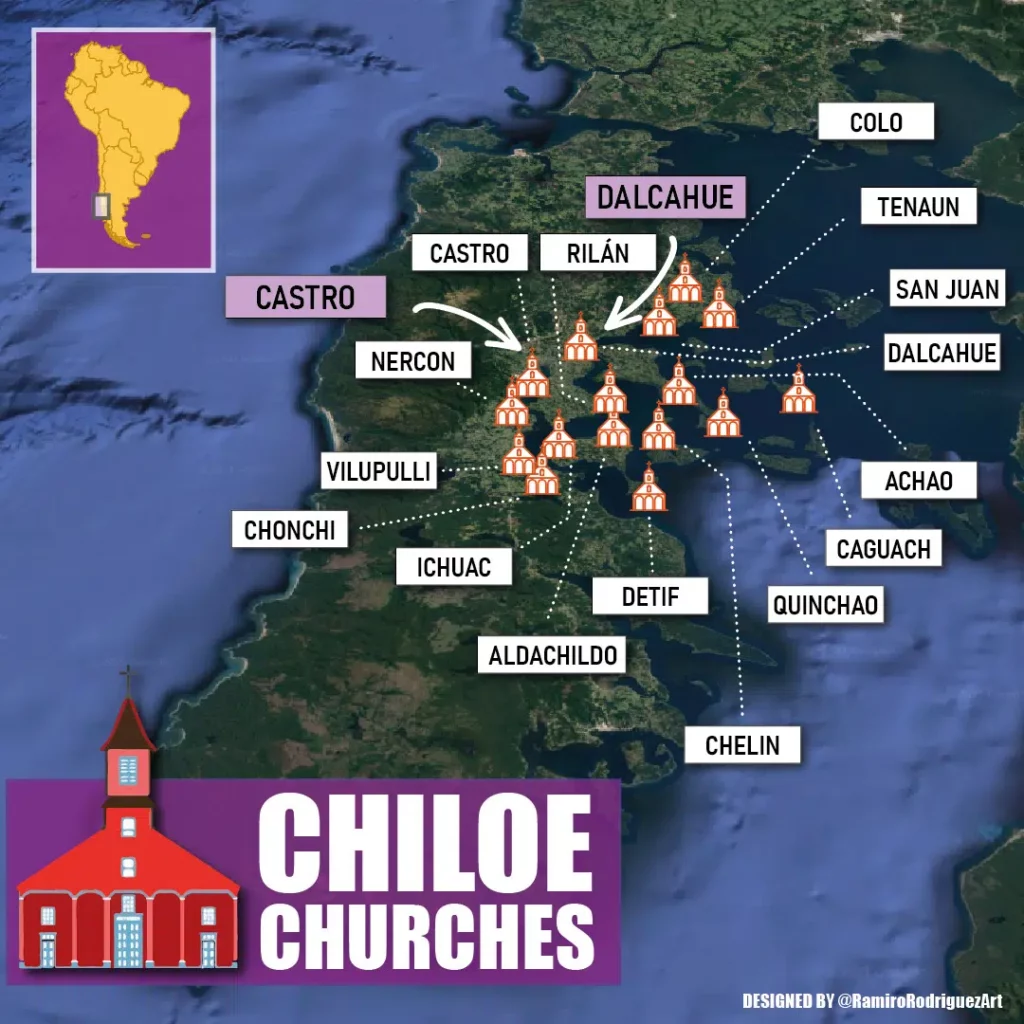
The Delicious Fishing Economy of Chiloé
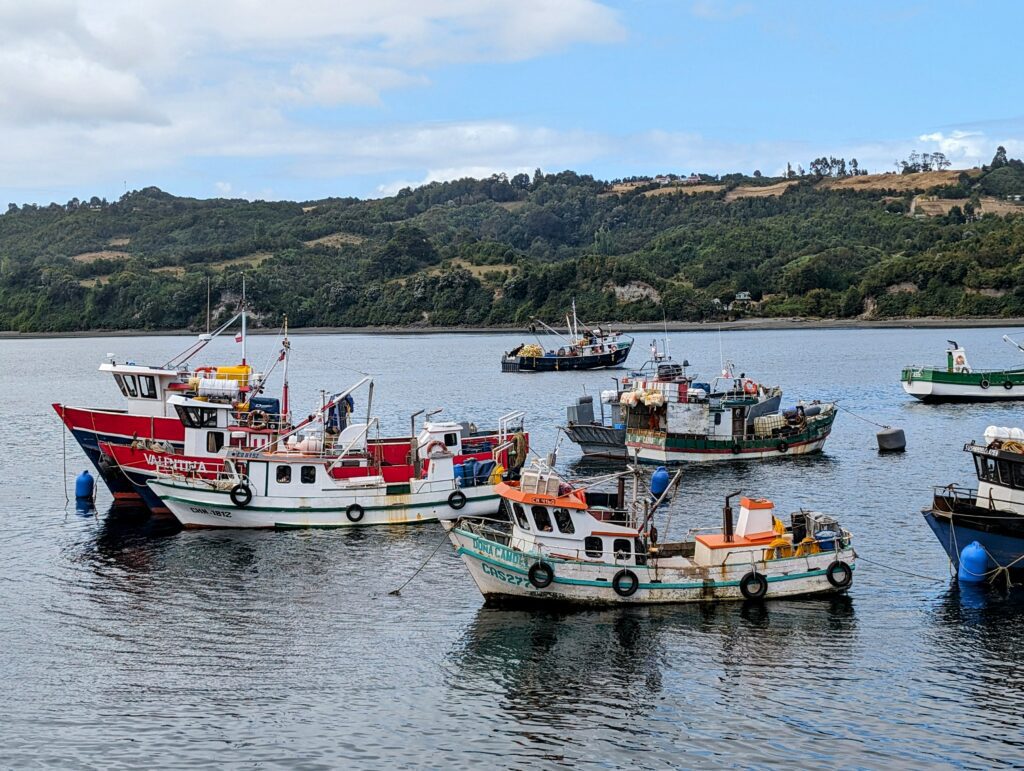
Fishing is part of the economy in Chiloé, although its economy is spearheaded by tourism. You can truly see it everywhere on the island between the markets in every town and the colorful fishing boats docked in the harbor of each village.
In addition to this, there are fish and food markets in many of these towns where you can eat or purchase truly fresh seafood. These are intimidating so let me walk you through them so you can have the best experience and the best food. Some of these markets will cook the fish caught that day “a la plancha” or on the grill and will be incredibly fresh.
If you are looking for a more complete dish, some of these towns have stalls that cook and sell local cuisine. We went to one in Dalcahue called Cocineria Dalcahue. It contained about 8-12 stalls, each selling traditional local dishes, most of which were seafood-based. The food vendors approached us, trying to convince us to eat at their stall, which often felt overwhelming. Many of these stalls sell the same food so we kept moving until we saw what we were looking for on their menu, written on a whiteboard hanging on the end of each stall.
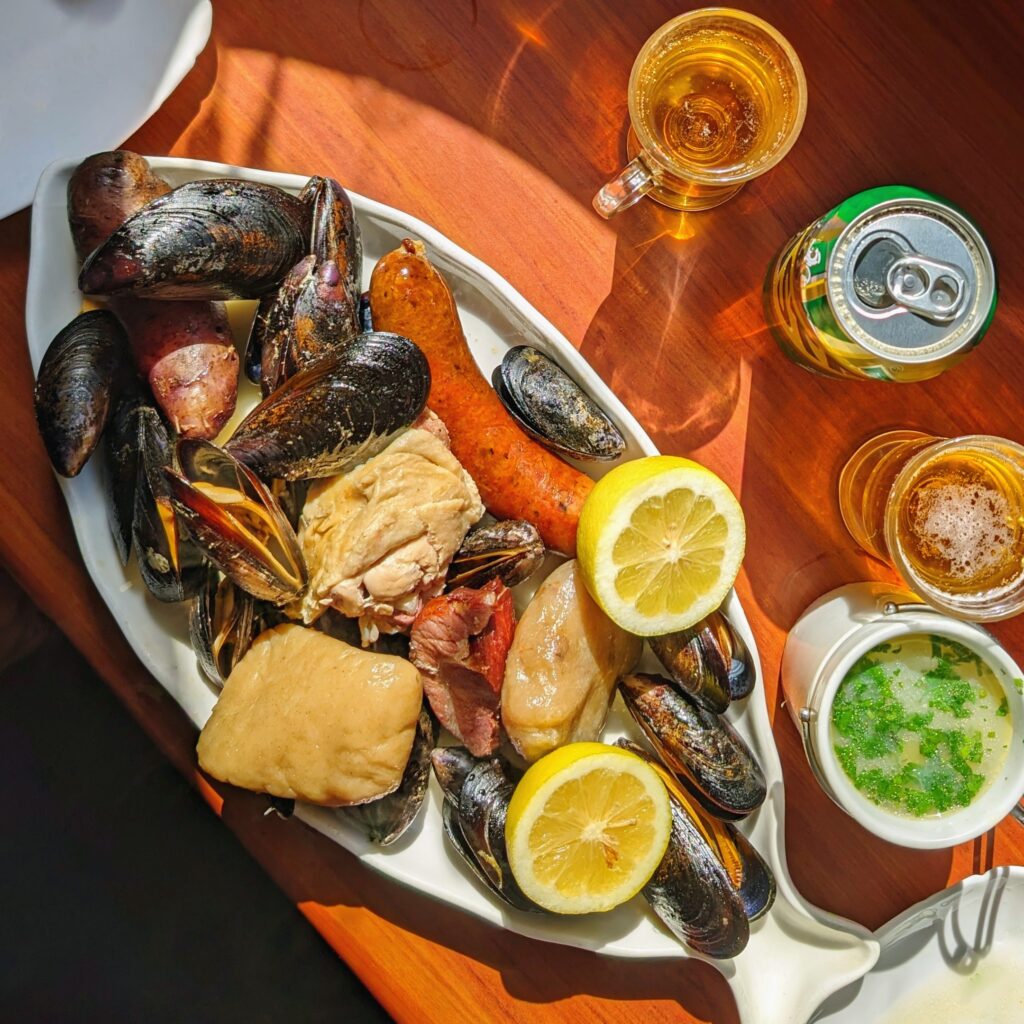
We wanted to try curanto, a traditional dish made with clams, mussels, sausage, and potatoes all wrapped in leaves and cooked in a hole in the ground with hot stones. We had previously seen someone prepping a curanto at a beach in a nearby town and knew we wanted to try it while here. Not only did we get all the meat and seafood that was cooked, we were also given the broth produced in the process and lemon to add even more flavor to the dish. It did not disappoint!
In a larger town on the island, Castro, we went to their main market, found outside of the center of the town. On the second floor, there are a few stalls where they also sell local cuisine. Here, you can find dishes that may be more meat-based, such as cazuela de vacuno (a broth with beef and potatoes). We were still craving seafood and decided to get chupe de jaiba (a delicious crab casserole filled with an incredibly generous amount of crab, onions, cheese, cream, and more).
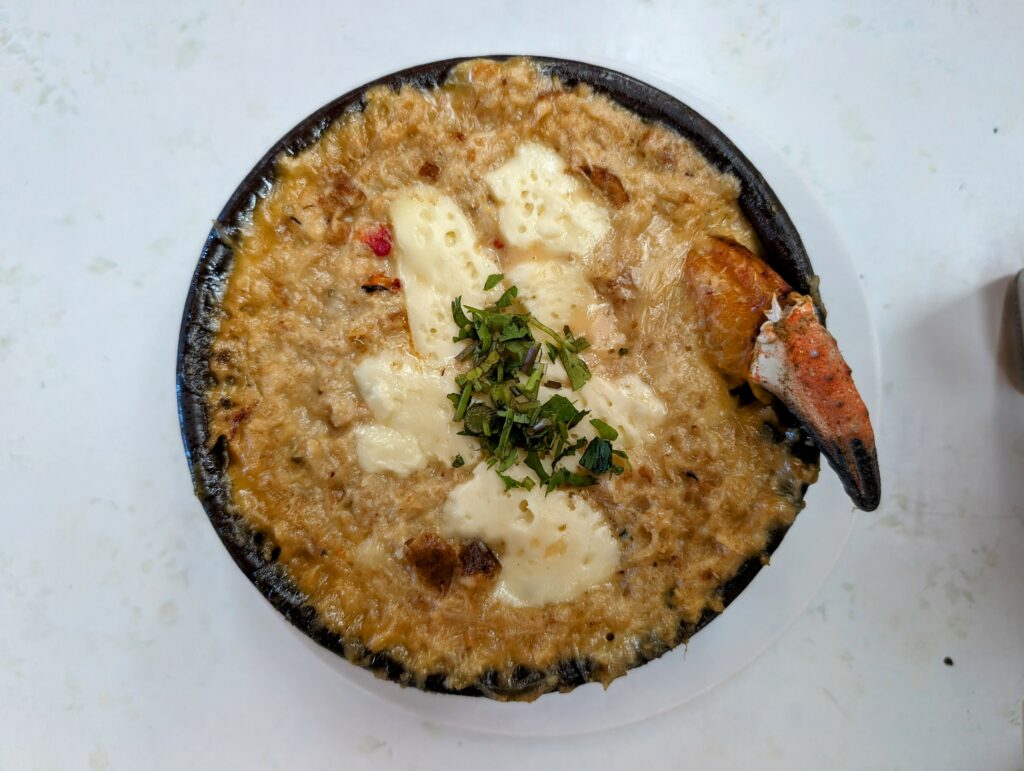
It is at these markets where you can find the food that locals enjoy. While it may be harder to navigate without knowing the local language (Spanish), the people of the region are kind and friendly. Don’t get overwhelmed and know that the challenge will be worth it!
The Mythology of Chiloé
The truly unique aspect of Chiloé is the strong mythology beliefs of the island’s culture. Chilote mythology is a combination of local indigenous beliefs and the superstitions of the Spanish conquistadors who came to the island in the 16th century. Because of its separation from the mainland of Chile, these myths truly flourished and the remnants of that can still be seen today. When walking through the markets and small towns, you can see imagery of mermaids and witches. These myths help explain the creation of the Chiloé archipelago and other aspects of life in Chiloé.
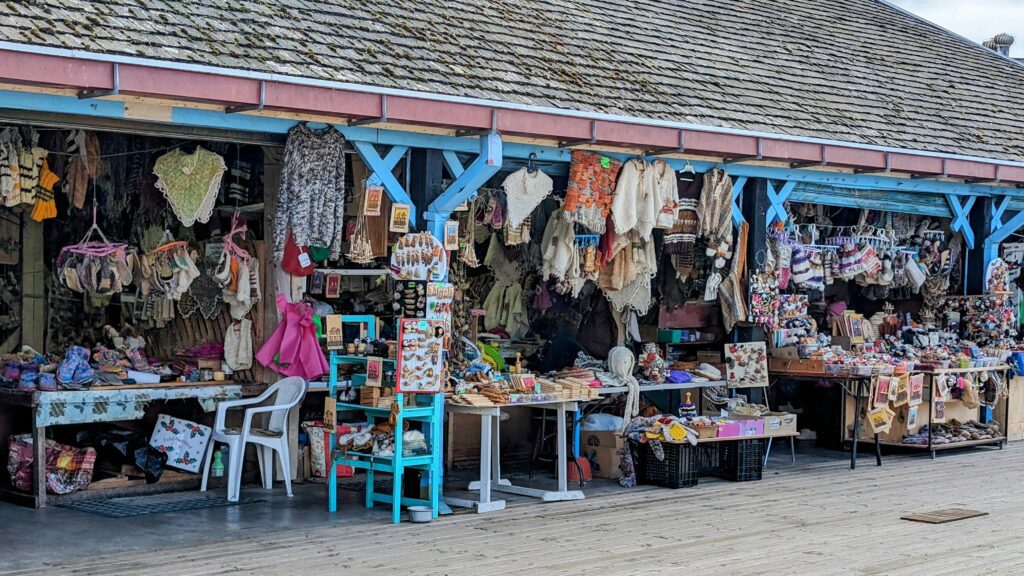
At the different artisan markets around Chiloé, you can find books written about Chilote mythology. These markets are also incredible to find beautiful crafts. The artisans here are known for their beautiful wool and woven wood objects. In Dalcahue, the artisans of the markets are required to be from Chiloé and are often passing down their craftsmanship through different generations.
How Much Time Should You Spend In Chiloé?
We spent a weekend in Chiloé and found that it was the perfect amount of time to enjoy the island (Friday – Sunday).
Day 1: We arrived in Castro on Friday afternoon and walked around the town.
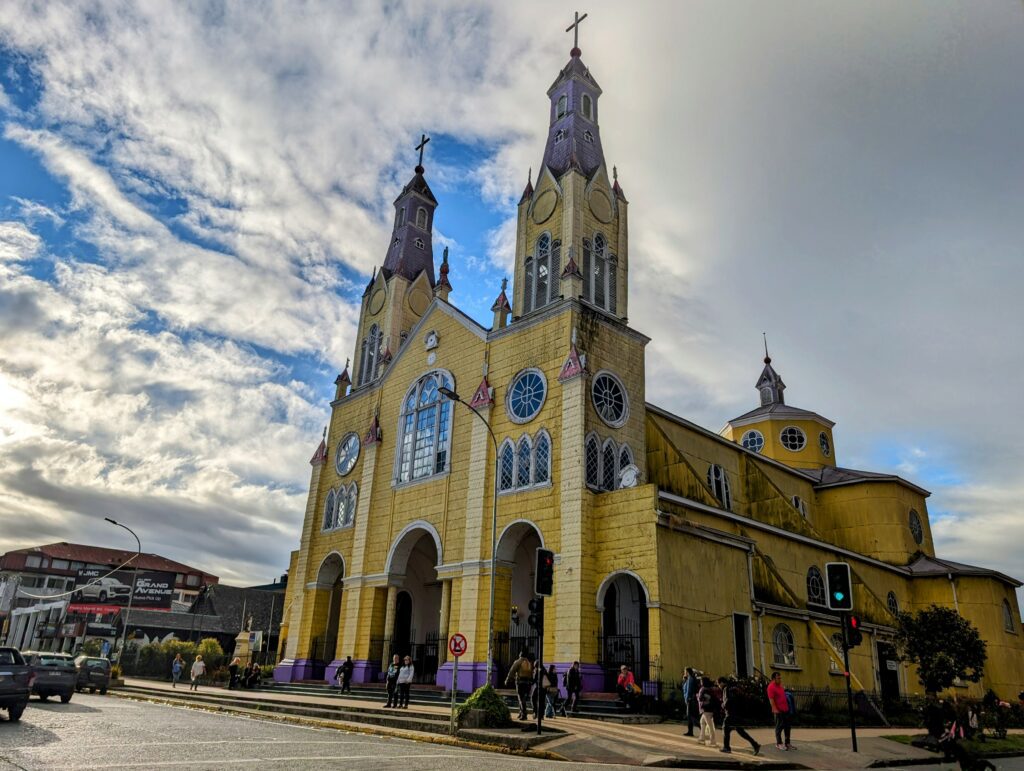
Day 2: On Saturday, we took a bus first to Dalcahue and then to Achao to discover the different markets and churches of the region. In the afternoon, we walked to the “Mirador Gamboa”, an iconic viewpoint of the buildings on stilts in Castro. Afterwards, we went to Nercon to see their wooden church and attend a cider festival run by the local indigenous population. (Cider is a common local beverage here)
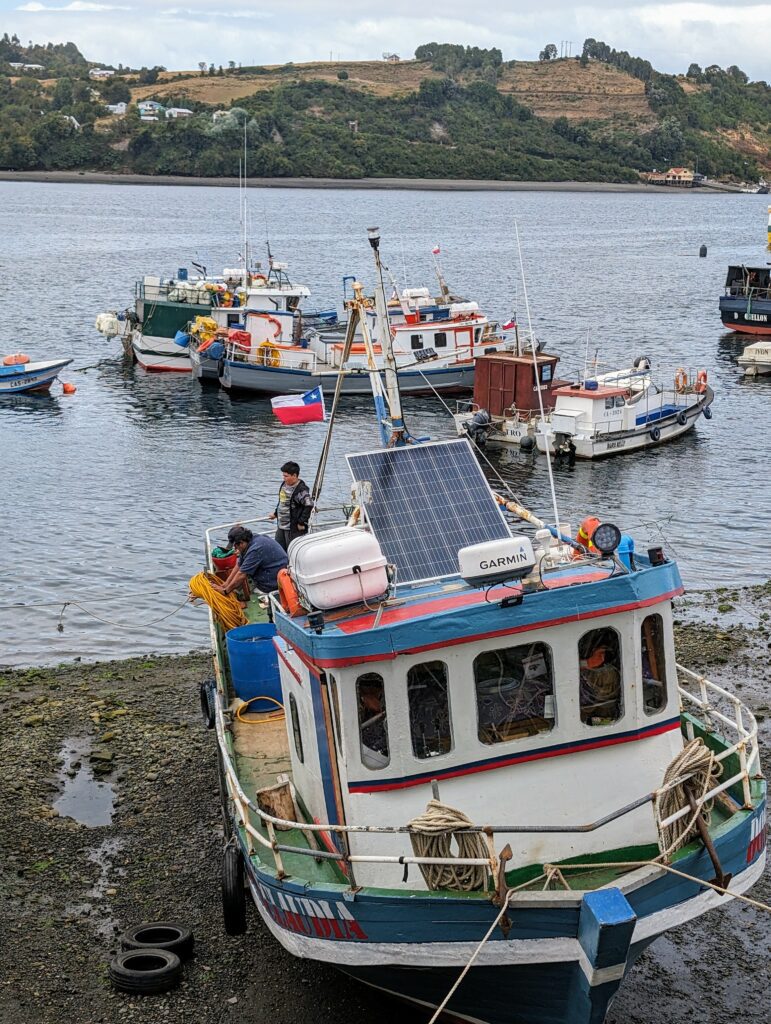
If you want to spend more time here: There are more churches to visit throughout the island but you may need a car to visit them. There are also local tour companies that can help you visit more of the island and they can be found on the main street in Castro. If you are interested in wildlife and nature, you can visit a penguin colony near Ancud and explore the Chiloe National Park.
Final day: we walked to the central market of Castro to eat our final meal on the island and took the bus to our next destination.
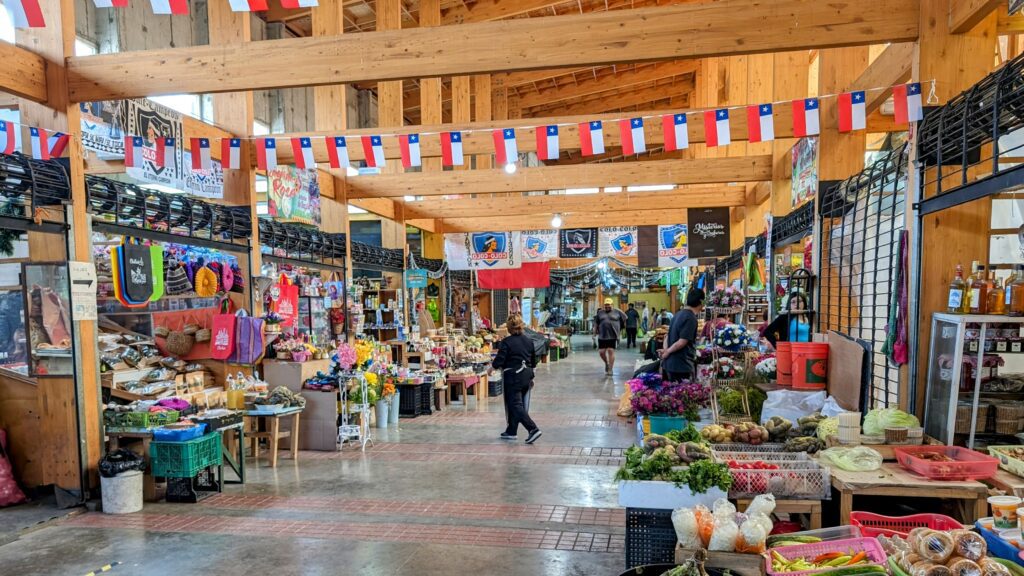
Getting Around Chiloé
While you can rent a car to visit the island, we were able to see most of the highlights using local transportation. These times are not posted on any websites but they run consistently enough that you do not need a strict schedule to make your way around the island.
The buses (they look like large vans really) all show their final destination and main destinations that they stop at on the front window of the bus. Knowing the town/attraction you want to visit will help you navigate the system. The easiest way to get on a bus is to go to the main bus station of the town. Here, you will see the final destination posted on the bus and you can ask the driver if they stop wherever you want to go.
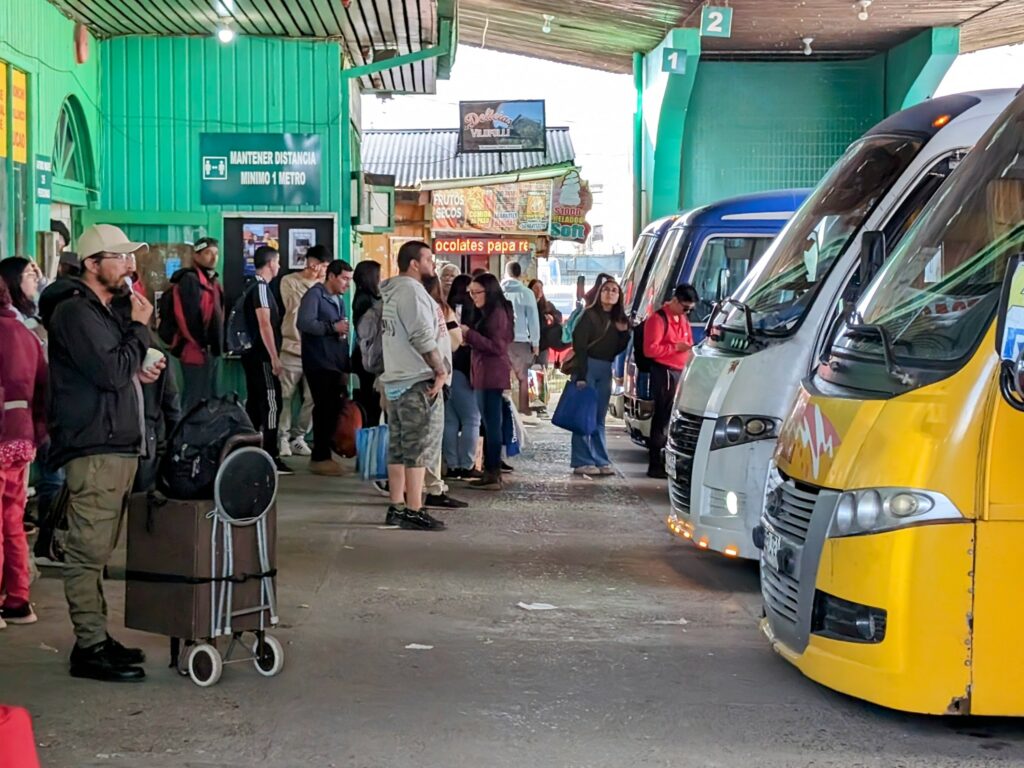
You do not pay the bus driver until you get off the bus, in which case you will tell them where you got on so they can price it correctly. To request a stop, simply walk towards the front of the bus and the driver will know that the next stop is yours. I highly recommend downloading a Google Map of the region so you can always have directions. You will need cash to pay and the price of the trip is posted inside the bus. We never had to wait more than 20 minutes for transportation and found the buses to be convenient to get around the island.
Where Should You Stay in Chiloé?
Castro is one of the two larger towns on the island and the hub for the bus system throughout the area. If you want to explore the archipelago using local transportation and visit the different small towns of the island like we did, then we would highly recommend basing yourself in Castro.
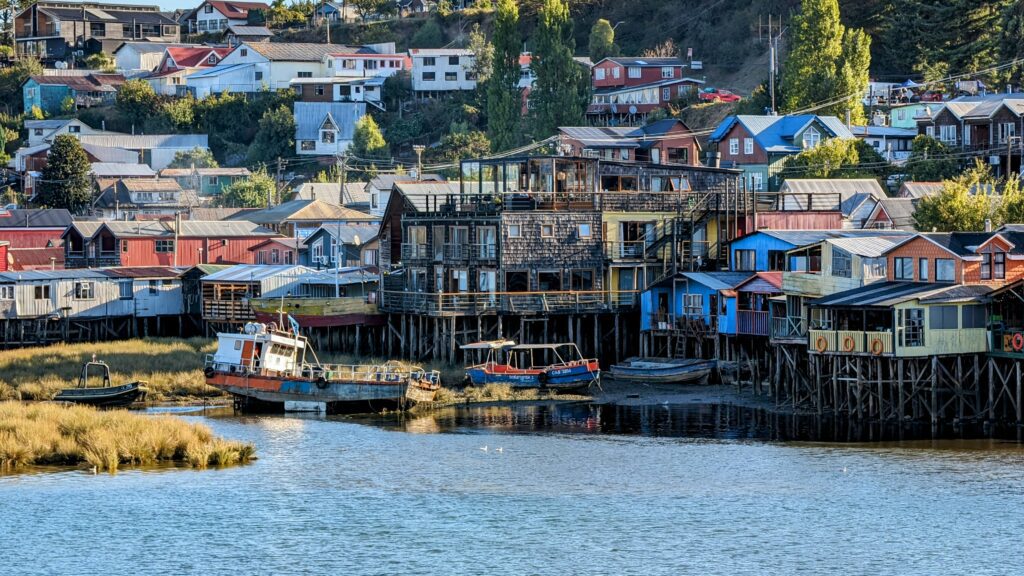
The other town that people stay at is Ancud. This is a better location if you want to visit the local penguin colony or explore the national park on the island. It is also the town that most day-trippers from Chile come to visit. If you want to tour the small towns of the island from here, we recommend renting a car, which can be done locally in Ancud.

